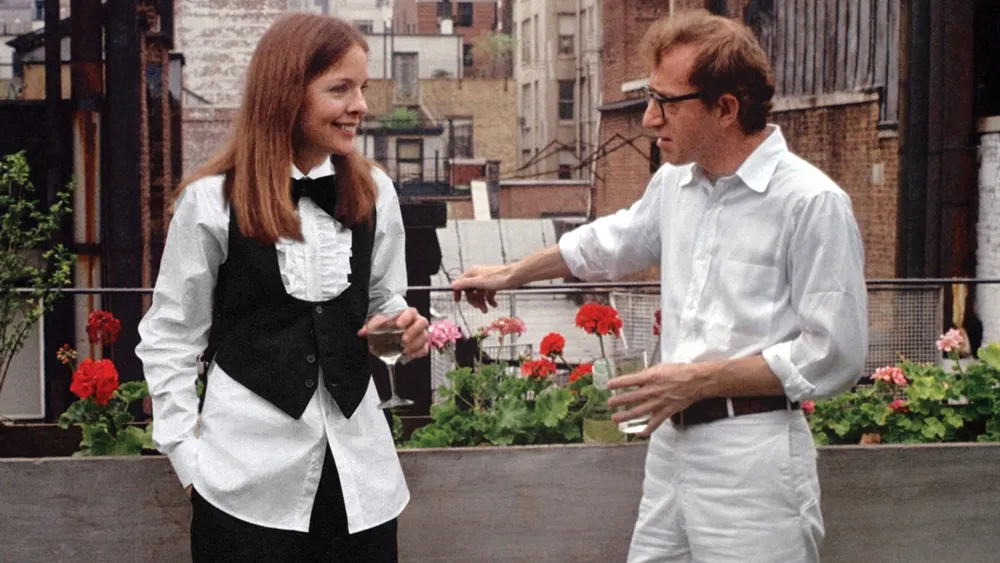When Annie Hall came out in 1977, it changed the way movies in that genre were made and how relationships were shown on screen. Directed by Woody Allen, this film introduced fresh ideas like characters openly talking to the audience, scenes where characters walked and talked instead of sitting around, and the use of visual cues to show their inner thoughts. It also introduced the neurotic protagonist, a character who is deeply insecure and overthinks everything. These ideas influenced not only romantic comedies but also cinema as a whole, and many films that came later wouldn’t exist without Annie Hall.
The Evolution from a Murder Mystery to a Romantic Comedy
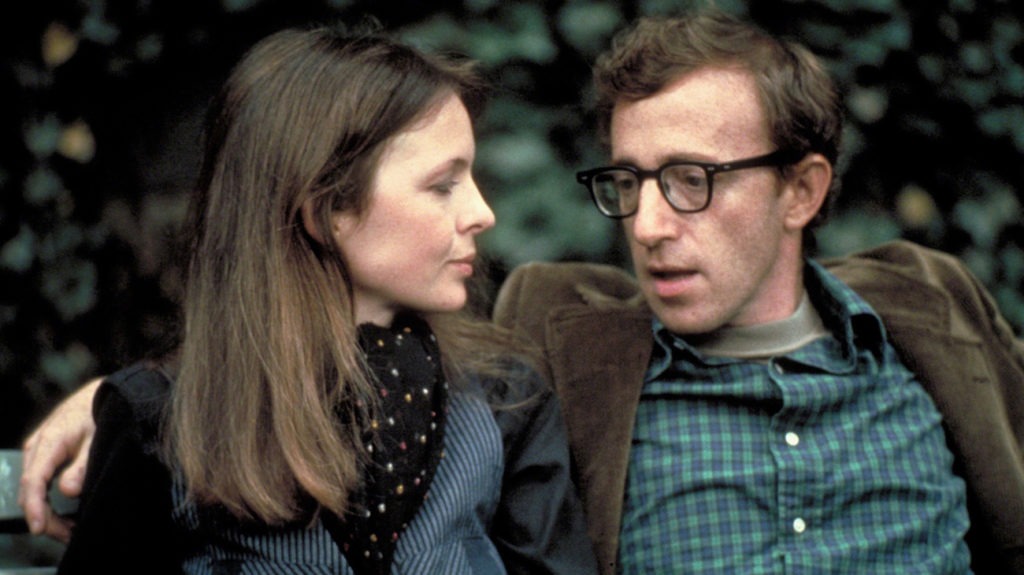
One of the most intriguing aspects of Annie Hall’s production is that it was originally envisioned as a completely different movie. The first draft of the script included elements of a murder mystery, with a far longer and more complex narrative. Woody Allen and his co-writer Marshall Brickman initially intended the film to be a mix of genres, combining the romance with a subplot about solving a crime. However, during the editing process, the focus shifted more toward the relationship between Alvy and Annie, and the murder mystery elements were ultimately cut.
The final version of the film is much shorter and tighter than the original script, with the romantic elements taking center stage. This transformation was largely due to Allen’s editor, Ralph Rosenblum, who played a key role in shaping the final cut. By removing the murder mystery and narrowing the focus to Alvy’s neurosis and his relationship with Annie, the film became more cohesive and emotionally resonant.
This significant shift in focus allowed Annie Hall to redefine the romantic comedy genre, making it more character-driven and emotionally complex. The decision to scrap the murder subplot and streamline the story allowed the film to concentrate on the universal themes of love, memory, and personal growth, which ultimately made it more relatable to audiences.
Walk-and-Talk: Bringing Realism to Conversations
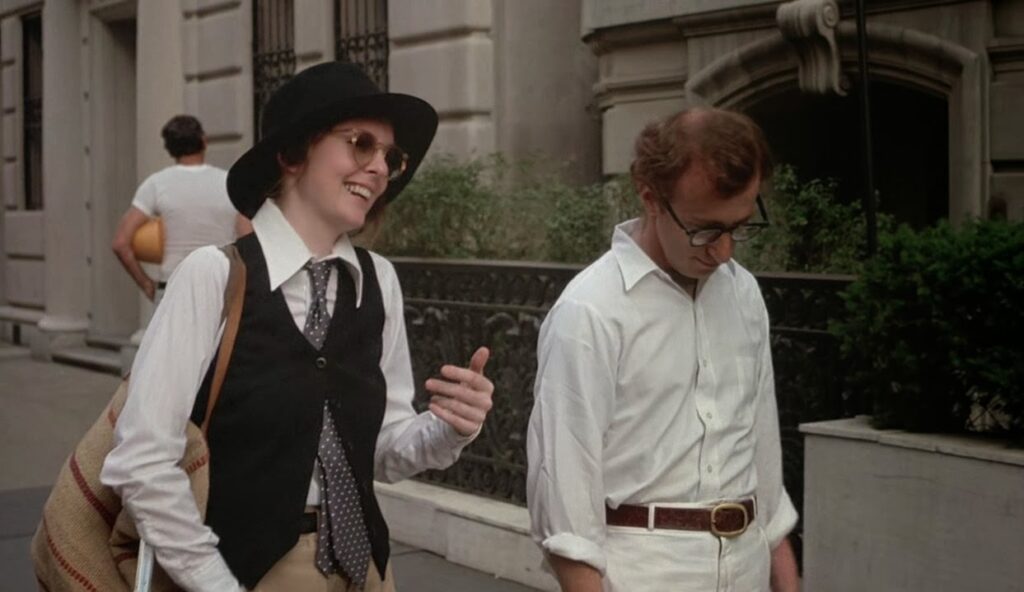
One of the key changes Annie Hall made was how characters interacted. Before this movie, many romantic comedies stuck to predictable settings where characters sat and talked in one place. Annie Hall broke away from this, with characters having conversations while walking through the streets of New York, making the dialogue feel more natural and realistic. These walk-and-talk scenes made the conversations feel more dynamic, and it gave the movie a sense of movement as if the audience was walking alongside the characters.
This approach influenced filmmakers who came after. Directors like Richard Linklater, in movies like “Before Sunrise (1995)”, and Aaron Sorkin, in TV shows like “The West Wing (1999-2006)”, used the walk-and-talk method to add energy to their dialogue-heavy scenes. This way of shooting scenes became a signature for movies that wanted to feel more authentic and spontaneous, capturing real-life interactions rather than staged conversations.
The Neurotic Protagonist: A New Kind of Hero
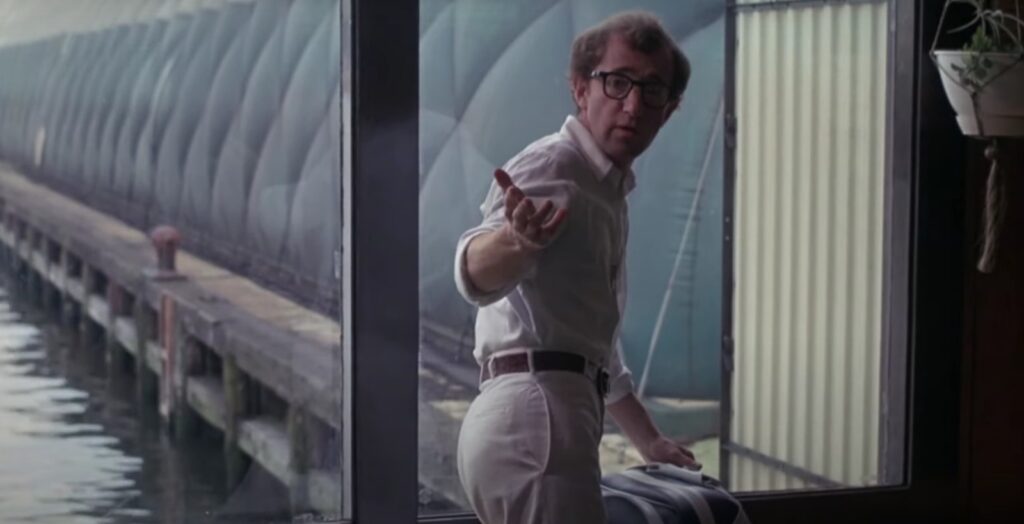
In Annie Hall, Woody Allen plays Alvy Singer, a character who is far from the typical romantic lead. Alvy is neurotic, constantly overthinking and analyzing everything. He’s insecure, awkward, and unsure of himself, especially when it comes to love. This was a big departure from the confident, smooth-talking heroes often seen in earlier romantic comedies. Instead of being the perfect romantic partner, Alvy’s flaws are front and center, making him more relatable and human.
This idea of the neurotic, overthinking character became a staple in many films that followed. Characters like Harry in “When Harry Met Sally (1989)” and Jesse in “Before Sunrise (1995)” are clear examples. They, too, struggle with self-doubt and tend to overanalyze their relationships, bringing a sense of realism to their characters. Without Annie Hall, these kinds of flawed, introspective characters might not have become as popular in romantic comedies.
Breaking the Fourth Wall and Visualizing Thoughts

Another groundbreaking technique in Annie Hall is when Alvy breaks the “fourth wall” and speaks directly to the audience. This isn’t just for comedic effect; it allows Alvy to share his thoughts and reflections with the viewer, creating a more intimate connection. By addressing the audience, the movie doesn’t just tell a story; it invites us into Alvy’s head, making us feel like we are part of his internal world.
This style paved the way for other films where characters talk directly to the audience, like “Ferris Bueller’s Day Off (1986)” and “High Fidelity (2000)”. These movies also use this technique to bring the audience closer to the main characters, letting us see their thoughts and struggles up close.
In addition to breaking the fourth wall, Annie Hall also used creative visuals to show what the characters were really thinking. In one scene, subtitles appear on the screen, revealing the characters’ inner thoughts as they speak. This clever way of showing the difference between what people say and what they really mean was a fresh idea at the time. Films like “(500) Days of Summer (2009)” and “Eternal Sunshine of the Spotless Mind (2004)” later borrowed from this concept, using visual cues to explore the complex emotions of their characters.
A Unique Narrative Style: Non-Linear Storytelling and Its Influence
One of the most distinctive elements of Annie Hall is its non-linear narrative style. Instead of following a traditional, chronological storyline, the film jumps back and forth in time, moving between different moments in Alvy and Annie’s relationship. This fragmented structure reflects how memories work, showing love not as a straightforward journey but as a series of disconnected yet emotionally significant moments. The film allows the audience to piece together the relationship’s arc from Alvy’s subjective perspective, giving us a more personal, reflective experience of the ups and downs of love.
This narrative style was quite innovative at the time and influenced many later films that adopted a similar approach. By breaking away from the typical beginning-middle-end formula, Annie Hall paved the way for movies like “Eternal Sunshine of the Spotless Mind (2004)” and “(500) Days of Summer (2009)”, both of which use non-linear storytelling to explore the complexities of love and memory. These films, like Annie Hall, emphasize that relationships are rarely simple or linear; instead, they are full of twists, turns, and moments that don’t always fit neatly together.
The non-linear narrative style also allowed Annie Hall to focus more on character development than the plot. By shifting between different points in time, the film creates a fuller, more nuanced picture of Alvy and Annie as individuals, not just as part of a romantic pair. This approach became influential in shaping character-driven narratives, where the emotional and psychological depth of characters took precedence over the progression of events.
In addition, the way Annie Hall plays with time and memory also resonated with films outside of the romantic comedy genre. Movies like “Pulp Fiction (1994)” and “Memento (2000)” took inspiration from this type of storytelling, weaving together different timelines and perspectives to create richer, more intricate narratives. Though these films are far from romantic comedies, they share Annie Hall’s belief that the way a story is told can be just as important as the story itself.
A New Way to Show Relationships
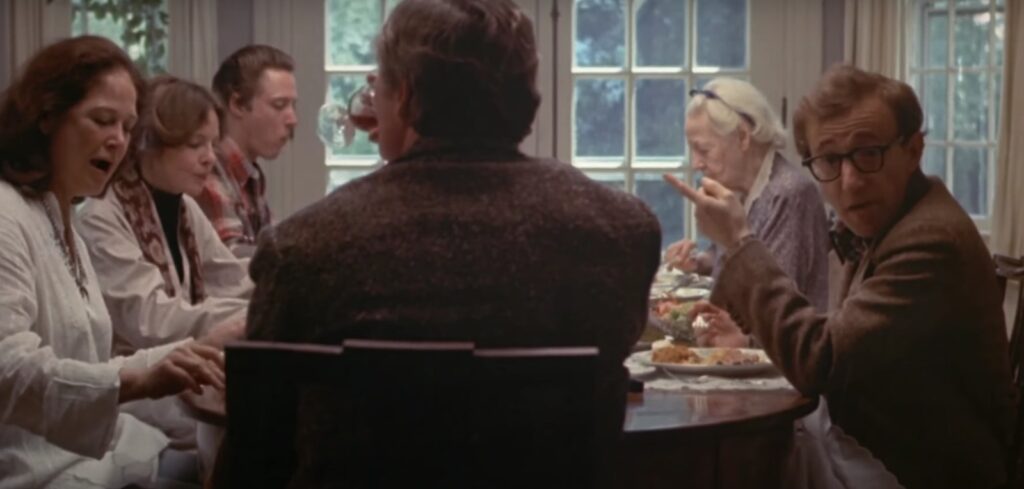
The way Annie Hall shows relationships is another reason it stood out. Instead of telling a typical love story with a clear beginning, middle, and end, the movie jumps around in time, showing different parts of the relationship between Alvy and Annie Hall (played by Diane Keaton). This approach reflects the way we actually remember relationships – as a collection of moments, both good and bad, rather than a straightforward story. The film doesn’t shy away from the messy, complicated aspects of love. It shows how relationships can be full of highs and lows, and sometimes they don’t have a clear resolution.
This realistic take on relationships became a major influence on later films. Movies like “(500) Days of Summer” and “Blue Valentine (2010)” follow a similar pattern, portraying love as something that isn’t always perfect or permanent. Instead of focusing on a “happily ever after,” these films, like Annie Hall, emphasize the journey of love – with all its imperfections, growth, and moments of connection and loss.
The Lasting Impact of Annie Hall
It’s hard to overstate how much Annie Hall changed romantic comedies and cinema in general. It opened the door for romantic comedies that were smarter, more introspective, and focused on flawed, realistic characters. Without Annie Hall, we might not have films like “When Harry Met Sally, Her (1989)“, or “Eternal Sunshine of the Spotless Mind”, all of which explore love in deeper, more thoughtful ways.
The movie also showed that romantic comedies could be more than just light, fluffy entertainment. By blending humor with intellectual themes and emotional depth, Annie Hall proved that this genre could explore serious topics like relationships, identity, and the human condition without losing its charm.
Annie Hall changed the way romantic comedies were made by introducing new storytelling techniques, like walk-and-talk conversations, neurotic protagonists, and breaking the fourth wall. It showed that relationships are complicated and often don’t have neat, happy endings, which made the film feel more realistic and relatable. Many of the films that followed owe their existence to Annie Hall’s innovative approach to both style and substance. Even today, its influence can be seen in romantic comedies and dramas that explore love and relationships in more thoughtful, authentic ways.

Kathan’s lifelong love affair with cinema began when his father introduced him to the magic of the silver screen at an early age. Ever since that first flicker of light in the darkened theater, he has been captivated by the power of storytelling through moving pictures. A deep thinker at heart, Kathan is particularly drawn to films that explore the complexities of grief with nuance and depth. This is why Arrival stands as his all-time favorite—a film that resonates with him on a profound level, merging science fiction with an emotional narrative that delves into loss, love, and the human condition.

